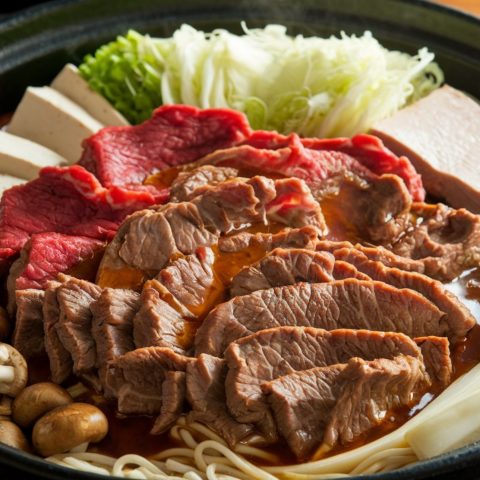
The Japanese countryside offers unique culinary experiences. Read on to learn about natural farming in Shikoku, see delicious daily meals from an Ehime prefecture homestead, and consider the outlook for local foods of rural Japan. Make sure you bring along some snacks because believe me when I say you’ll be leaving hungry!
Local and Home-Grown Foods in Rural Japan
Hi! Bitsii here. My husband and I live deep in the mountains of the Japanese Countryside in rural Shikoku. We’ve been building a permaculture homestead here. That means growing fruit and vegetables, but it also means learning more about the local foods of Japan. We’ve been tending to the kiwi fields, growing vegetables from seeds, and teaching ourselves how to not only eat better but self-sufficiently as well. That means prioritizing foods we can grow, forage, hunt, and fish from right here in the countryside.

Views of the Seto Inland Sea From an Orange Orchard in Ehime, Shikoku Credit: Bethany Nakamura
A Noteworthy History of Sustainable Farming in Ehime Prefecture
Masanobu Fukuoka was a Japanese farmer from Ehime Prefecture known for his natural farming methods. He is easily considered the forefather of natural farming, having literally written the book, “The One-Straw Revolution.” Visitors to the prefecture can even still visit his farm, which is now run by his descendants today.
Although Japanese tradition is heavily connected to nature, natural farming practices have mostly been replaced by plastic weed barriers, chemical fertilizers, and mono-culture crops. Fukuoka’s approach on the other hand was far more organic, natural, and a bit wild. He would scatter a mix of seeds, sometimes in clay balls, across fields and mountainsides without weeding, watering, or using pesticides.
Following his developed practices, we have created incredible vegetable fields on our property that are diverse, weed-filled, and completely chemical-free. While our farm is more structured than Fukuoka’s “Do-Nothing Farming,” I love being connected to permaculture history here in Ehime Prefecture.

Mountain Views of Ozu City, Ehime Prefecture. Credit: Bethany Nakamura
Eating with the Seasons of Japan
Although we haven’t achieved food self-sufficiency here at our homestead, it’s a vision we work towards every day. But a big part of the joy in growing food isn’t just the farming – it’s the eating! There is nothing quite as satisfying as walking out to the field, gathering lettuce, beets, carrots, and more, then enjoying them for lunch just a few minutes later. So even though we might not have a lot of money, we are definitely rich in lifestyle.
Eventually, we would like to share this experience with the visitors of our future guesthouse. In the meantime, here are some of the home-grown and locally sourced meals we’ve been enjoying here in the Japanese countryside.

Onigiri Lunch on Our Engawa Credit: Bethany Nakamura
Local and Home-Grown Meals in Rural Shikoku, Japan
Umeboshi (Pickled Plum) Onigiri, Sake-Dashi Onigiri, Miso Soup, and Green Tea.
Recently, a local uncle brought over a large pot of pickled plums. Called Umeboshi in Japanese, they are very salty and sour in flavor. Not everyone likes the taste, but, personally, it’s my favorite rice ball flavor! He also brought me the leg of an inoshishi (wild boar) he had hunted himself! 😲
Onigiri is actually very easy to make! I even found an inexpensive mold at the 100-yen store. You fill it up halfway, place your favorite fillings in the middle, add more rice, and press everything together. People think I’m good at making Japanese food, but, honestly, it’s an easy hack!

Sashimi at Grandpa’s House Party Credit: Bethany Nakamura
Wild Carp Sashimi with Aromatic Sansho (Japanese Pepper) Leaves.
We went to a house party (mostly Granpas) and I watched as one Ojiisan sliced a giant carp fish into sashimi. Watching people slice seafood with such proficiency is truly an art and is certainly something you can’t find anywhere else in the world. They also had some miso sweetened with local honey and plenty of dry nihonshu sake that perfectly paired with the fish.
Here, we learned that the best sashimi doesn’t smell “fishy.” Our host was even nice enough to demonstrate his favorite way to eat sashimi – he used his chopsticks to sandwich some sansho between the fish. Sansho can be very strong, so this method certainly makes the Japanese Pepper easier to eat and far more palatable.

Homemade Tempura Lunch Credit: Bethany Nakamura
Foraged Sansai Mountain Vegetable Tempura, Homegrown Kiwi, Marinated Daikon Radish, Itadori, Sesame Spinach, and Brown Rice.
I had never eaten daikon before moving to Japan but now it’s one of my favorite vegetables. There are so many ways to prepare it, and we ate it three different ways here! Fried, grated, and marinated. My husband is the tempura master of our household!
Here’s how we do it at home. After frying the vegetables, we strained the oil and saved it in a canister to be used again later. The little leftover fried bits are called “tenkasu” and can be added as an ingredient in okonomiyaki. But I think they are just as delicious by themselves, we often just eat them over rice with salt!

Light Summer Lunch Dishes Credit: Bethany Nakamura
Garden Kale Salad, Spring Onion Natto, Korean Seaweed, Wild Daikon Miso Soup, and Katsuobushi Sesame Tofu.
It is common for Japanese meals to be composed of many small dishes, so you can enjoy several flavors in one sitting. This meal with tofu, salad, and soup has a light feeling. The tastes are subtle, making it nice on one of those hot summer days!
There is a grandma who makes and sells her own tofu in our village, which is absolutely amazing. I think it’s so good in fact that I try and make a habit of walking down the mountain to buy a big block every once in a while. Sometimes people say tofu is bland and needs to be amended with seasonings and sauces. This tofu is totally different! It’s delicious and nutty on its own, making it more like a mild cheese.

Homemade Mapo Eggplant Dinner Credit: Bethany Nakamura
Mapo Eggplant, Agedashi Dōfu (Fried Tofu) Miso soup, Homegrown Kiwi, Lemongrass Herb Tea.
We have a sansho (Japanese pepper) tree on our property, and trust me when I say the flavor is intense! It isn’t spicy so to speak, but it has a kick similar to eating wasabi. A mapo dish made with sansho would be too strong by itself, so we balanced it with rice and fresh kiwi. The lemongrass tea we make with our garden herbs has a gentle flavor allowing it to pair nicely with the food. Overall, this meal has a nice aromatic experience.

Japanese-Style Spaghetti Lunch Credit: Bethany Nakamura
Shio-Koji (Salty Fermented Rice) Japanese-Style Spaghetti with Bacon, Broccolini, Chamomile Rose Tea, Katsuobushi Spinach, Fresh Radish, and Local Orange.
Fermented koji is a lovely ingredient to create creamy sauces with. It adds a depth of flavor without needing to rely on butter, making it perfect for any creamy pasta sauce. Here, we topped this spaghetti with roasted nori seaweed.
As you’ve probably noticed by now, a lot of our homemade dishes are paired with delicious fresh fruit, and here’s the reason why. Ehime is famous for mikan (mandarin oranges). We are also the #1 producer of kiwi fruit in Japan. We grow lots of kiwi for ourselves, and our neighbors kindly share oranges with us often. The oranges are very juicy and sweet! The best way to eat oranges is to slice them against the grain of the pulp, which makes them extra juicy!

Homemade pizza lunch enjoyed outside Credit: Bethany Nakamura
Squash-Blossom Salad, Rosemary-Beet Pizza, Garden Vegetable Minestrone Soup, and Fresh Peppermint Herb Tea.
We made a simple pizza oven outside from special bricks and metal brackets. Pizza isn’t very Japanese, but our Japanese neighbors love to eat our homemade pizzas and bread! My favorite way to make pizza is to top it with olive oil, finely chopped rosemary, plenty of sea salt around the crust, and with our freshest garden vegetables. Sometimes we use Japanese mayonnaise instead of sauce, and it’s certainly something we suggest you try. Cooking pizza in a wood-burning oven gives it a bit of added smokey flavor, and the crust always turns out perfectly!
Another fun part of preparing countryside foods is the tableware. When we moved into this akiya (vacant house), there was a lot of furniture and tableware left behind. The plates you can see in the image were here when we bought the house, and believe me when I say that we use them all the time.
The Future of the Countryside and Local Foods in Japan
Japan as a country has been seeing a decline in domestic food production. And while rural areas have been facing more and more depopulation, we think there is much joy to be discovered here. That includes delicious locally sourced produce, home-cooked meals, and sustainable countryside lifestyles. This is why we hope to share with you the greatest aspects of having your own farm in the countryside. I hope you enjoyed this little tour of our local foods in Japan! If you’d like, you can follow along with our journey on Instagram or YouTube.
PIN THIS FOR LATER
If you’re interested in visiting some rural parts of Japan, reach out to our Specialists Team to plan your WHOLE trip!




